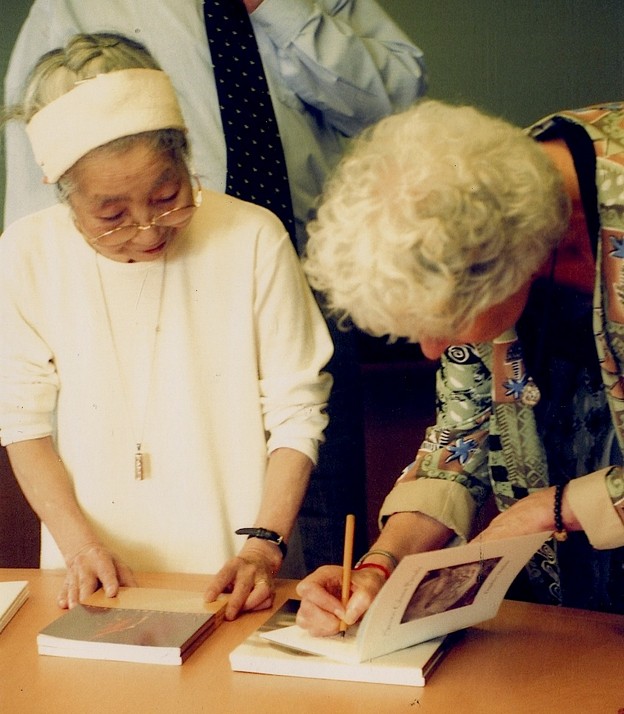Response to Cid Corman in Kyoto
By Carol Williams

I am delighted to be in touch with Carol Williams, a dear friend of Shizumi Konishi (Corman), Cid Corman’s wife of many years in Kyoto, Japan. Carol read J2’s recent feature on Corman with pleasure, and wrote me with further details about Shizumi and the Cormans’ life together in Japan. I urged her to let me publish a few of her notes, and they follow. — Al Filreis
I have just come across the article “Basho’s Pheasant” which I enjoyed immensely, but feel I should make the following corrections.
We lived just outside Kyoto for five years and became very close to Shizumi Konishi / Corman, shortly after Cid’s death, meeting her at least once a week, sharing meals and exploring places together both inside and outside the city. She also came to stay with us on several occasions such as American Thanksgiving and Christmas. Shizumi spoke of Cid, his family and her own at great length so I feeI I can safely say that she would be turning over in her grave at being described as a “native of Kyoto.” The Konishi family was from Kusatsu, a city outside Hiroshima, and moved to Kyoto shortly before the outbreak of W W II. As stated by George Evans, outsiders were treated 'politely' by those who were really from Kyoto, i.e. that their family had been there several hundred years. Kyoto people, with relatively few exceptions, are known for being reserved, or, as Shizumi put it, “the blood in their veins is as cold as their climate.” Shizumi never considered herself to belong to Kyoto and certainly was not a “native” as described by George Evans.
(Note: Shizumi took on Cid’s family name when they married and was proud to use the name. However, when he died the Japanese government would not allow her to use his name any longer and all formal paperwork, including medical appointments, had to be in the name of Konishi. The tatty “Cid Corman” sign remained on the front door of the house, except when the wind was too high, until she died.)
The subject of Cid’s translations: Cid never really learned to speak Japanese, let alone write the Japanese language. He chose not to quite deliberately, and it is time that this was made known as Susumu Kamaike, a long standing friend of Cid's, who is fluent in both languages, was responsible for the translation from Japanese to English of the Basho work (and others in conjunction with Cid's name), referred to in this article. Cid then refined the English version of Kamaike's translation, setting it in a more poetic medium. He and Kamaike Sensei would often spend many hours deciding on the best turn of phrase. However, Kamaike Sensei has not until recently been given the credit he is due.